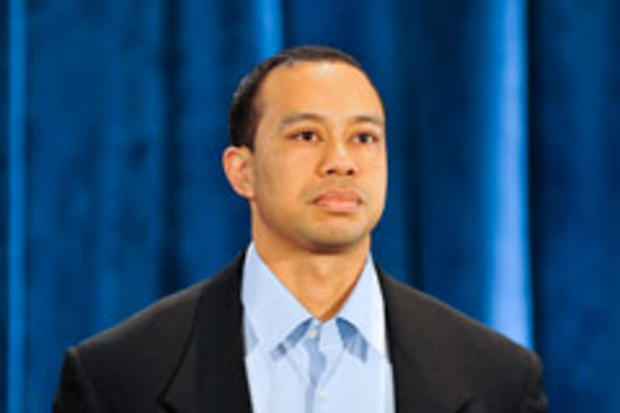The Tiger Effect: How Woods Drives the Golf Business
When Tiger Woods' sex life blew up in his face in 2009, Nike was one of few sponsors to stick by him. Nike still sponsors Woods even though he hasn't won a contest in more than 20 months, has been off the course with injuries for extended periods, and has slipped from the top spot to No. 20 in the world and his earnings fell 39% in 2010 (to a still impressive $74 million).
Sounds like a disastrous marketing decision, right? Hardly.
While Nike's golf ball business sank in the six months following the scandal in November 2009, a study done by the Tepper School of Business at Carnegie Mellon University [pdf download] concluded that Nike clocked $2 million in sales after the scandal that it otherwise would not have gotten.
Woods alone might be the sport's biggest business driver -- but that can work in ways both good and bad.
There's a lot of money to be made in golf, and that — combined with the tightness of the market — makes competition between golf brands unusually fierce. Before 2000, Nike didn't even have a golf business. "The only way to garner share [in the U.S.] is through game-changing, breakout innovation," says Davis. "Golfers want to get better. If you can deliver product that will make them better they will absolutely try it."
Stealing share through innovation is one of the reasons Nike signed up Woods in the first place. The company's product developers pick his brain about every technological aspect of the game, from the shoes he wears to the ball he plays. After signing Woods in 2000, Nike built a 50,000-square foot golf R&D facility in Fort Worth, Texas, which is referred to internally as "the oven" (because it cooks up new products). Among those new products is the 20XI ball, which has a resin core that Nike claims allows players to hit it farther and control more spin on and near the green.
Nike now has 8 percent of the market compared to Bridgestone Golf's 11 percent and Titleist's 58 percent, an impressive feat in a mature market. "There's no doubt signing Tiger was the catalyst to Nike really deeply committing to the golf business," Davis says.
Tiger's allure is so powerful that this year Nike sent him to Asia, where golf is still growing due to burgeoning new middle-classes in China and Korea (and where the scandal had a much lower media profile). The "Make It Matter" tour "was all about shining a light on golf in that part of the world. He did clinics with kids. For VIP customers, he took them out on a course and talked about how he plays a hole," Davis says.
Nike is trying to repeat in the East what it achieved with Woods in the West: In its 10-year sponsorship of Tiger Woods, Nike's golf ball unit alone added $91 million in extra revenue and $60 million in extra profit. When Woods endorsed Nike, 4.5 million new customers went with him, according to the Tepper study.
If Woods had a hand in lowering the price of sponsorships, he also inspired brands to approach athletes with more trepidation. "We recently had a client who asked us to run a criminal background check on a player. I've never had that request for a professional sports sponsorship before," Smith says. "They wanted to look into his past. They wanted to spend time with him to make sure he wasn't a big drinker and had the same moral values."
Other brands are trying to wean themselves from the traditional addiction of sponsoring professional players in favor of a cheaper — and perhaps less risky — strategy. For the last three years, Bridgestone Golf has toured U.S. courses with its "ball-fitting challenge" tent. Golfers hit a ball into a net and computer software hooked up to a high-speed camera analyzes their shot for swing speed, launch, angle, and spin rate so that the company might steer them to the right ball for their game. Bridgestone makes a range of balls that it claims compress more on a drive and spin more near the green, so that amateurs can make the most of their sub-par performances. "What we hope to do, instead of serious golfers making a decision based on ego — 'I want to do what the pro does' — they might make their decision based on logic," says Bridgestone VP of marketing Dan Murphy. "They might want to understand golf ball construction."
But even Murphy says there are days when he'd like to see Woods dominate the game the way he once did. "If you're a core golf product like us it doesn't really matter — the avid golfers are going to watch golf whether Tiger's playing or not," he says.
But, he admits, "it would be better to have him for sure because he brings an energy to the game."
Check out BNET's 2011 Guide to Business & Golf >>

